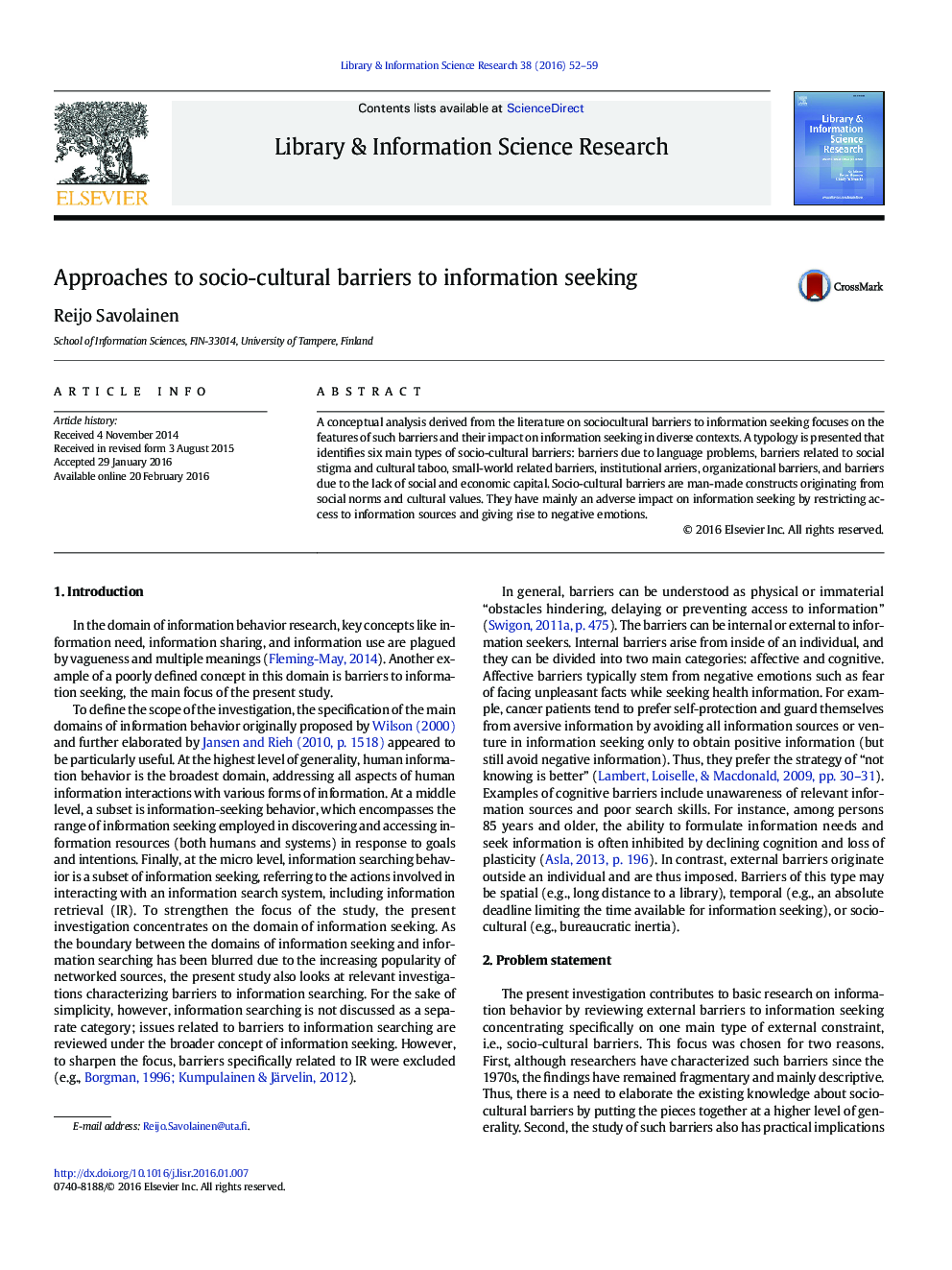| Article ID | Journal | Published Year | Pages | File Type |
|---|---|---|---|---|
| 1099230 | Library & Information Science Research | 2016 | 8 Pages |
•Conceptual analysis identified six main types of socio-cultural barriers to information seeking.•Examples of socio-cultural barriers include institutional barriers and barriers related to social stigma and cultural taboo.•Socio-cultural barriers appear differently in various contexts of information seeking.•Socio-cultural barriers have diverse though mainly negative impacts on information seeking.
A conceptual analysis derived from the literature on sociocultural barriers to information seeking focuses on the features of such barriers and their impact on information seeking in diverse contexts. A typology is presented that identifies six main types of socio-cultural barriers: barriers due to language problems, barriers related to social stigma and cultural taboo, small-world related barriers, institutional arriers, organizational barriers, and barriers due to the lack of social and economic capital. Socio-cultural barriers are man-made constructs originating from social norms and cultural values. They have mainly an adverse impact on information seeking by restricting access to information sources and giving rise to negative emotions.
